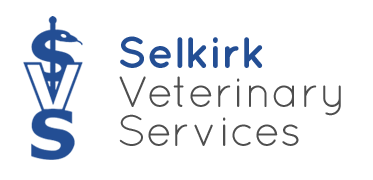Nutrition – Raw Food Diets
What are some of the benefits of feeding a raw food diet to pets?
Raw food diets are available commercially, or can be prepared at home. They contain whole animal and plant tissues that are left in their raw state, and have not undergone processing to denature (break down) their proteins, starches and fats.
"A common misconception is that raw food is completely digested by animals..."
A common misconception is that raw food is completely digested by animals, due to its "increased enzyme content". Research evidence suggests the opposite. Raw foods are likely to be more slowly digested and absorbed. Over time, there is evidence that the animal responds by increasing its own digestive enzyme production, making its digestive tract stronger, not weaker. In the short term, some animals may show symptoms such as diarrhea or vomiting that is not related to the presence of bacteria in the food. These symptoms will usually resolve over time.
Rather than being a disadvantage, delayed absorption may be the chief reason behind what appears to be impressive clinical benefits of raw food diets. Lower digestibility results in a lower glycemic index, or rate of an increase in blood sugar after a meal. Foods with a lower glycemic index play an important role in preventing insulin resistance, and diabetes mellitus.
Many of the conditions discussed above are associated with insulin resistance and excessive carbohydrate intake in humans.
"There is emerging evidence that cats may be similarly prone to insulin resistance and its sequelae."
There is emerging evidence that cats may be similarly prone to insulin resistance and its sequelae. If true, raw food diets and diets low in carbohydrate content may play an important role in preventing these conditions in cats.
What are some common misconceptions about feeding raw food diets to pets?
Advocates of raw food diets, whether they include raw bones or not, generally state that raw food diets represent the natural or 'paleolithic' diet for dogs and cats.
"...modern dogs and cats are not necessarily the same as their ancestors."
What they often forget is that modern dogs and cats are not necessarily the same as their ancestors. Thousands of years of domestication, adaptation to diets based on human foods or leftovers, and genetic modification by inbreeding to establish specific breed characteristics have altered the anatomy as well as the digestive physiology of the modern dog and cat, thus affecting their nutritional requirements and biochemical individuality.
Are there concerns about nutrient balance when feeding a raw diet?
Raw food diets may be significantly imbalanced with respect to their mineral content, with excesses or deficiencies in calcium, phosphorus, zinc, magnesium and iron being the most common imbalances. Some raw food diets are deficient in fiber. Many supporters of raw food diets maintain that the diet does not need to be balanced over the short term because it will become balanced over the long haul. This idea overlooks the fact that most of our pet animals are reliant on us to provide all of the components of their diet, and if we don't provide all of the necessary nutrients, it is impossible for the diet to become balanced over time. Some authors propose that animals will only eat what they require in order to balance their nutrient intake. This contention presumes an owner would see fit to offer a range of choices, varying in nutrient content, which many don't. In addition, if offered a highly palatable food such as raw meat (at least, palatable to the carnivore) at the same time as an offering of vegetables or fruits, most carnivores will preferentially choose the meat.
"Typical raw food diets may not meet the additional requirements for growth or reproduction..."
Typical raw food diets may not meet the additional requirements for growth or reproduction, especially for puppies or kittens, and pregnant animals. Veterinary advice is very important to ensure a balanced diet is being fed.
Are there any risks associated with feeding raw meats to pets?
Healthy pets may be relatively resistant to developing disease associated with contamination of foods with bacteria or their toxins. However, many of our pet animals have health problems and may be susceptible to infection by disease-causing strains of bacteria.
Raw foods may themselves contaminate the environment and even if the pet is in a state of optimal health, it is still possible for him or her to contaminate the environment by shedding disease-causing bacteria in the feces. The bacteria of most concern are Salmonella, some species of E. coli, and Campylobacter jejuni, any of which can be present as contaminants on human-grade food products.
 In order to minimize these risks, it is imperative that you follow the same sanitation practices that you use in preparing your own foods. Wash your hands and all utensils thoroughly before and after handling raw meat. DO NOT use wooden chopping boards. Store the pet's meat so that it can't contaminate human foods (ideally, you should have a separate freezer for storage of your pet's food).
In order to minimize these risks, it is imperative that you follow the same sanitation practices that you use in preparing your own foods. Wash your hands and all utensils thoroughly before and after handling raw meat. DO NOT use wooden chopping boards. Store the pet's meat so that it can't contaminate human foods (ideally, you should have a separate freezer for storage of your pet's food).
"Confine the feeding of the raw diet to one location in the house..."
Confine the feeding of the raw diet to one location in the house, or to one location outdoors. Do not allow your pet to lick or kiss your face. Ensure meat is frozen before preparation, and that raw food prepared in advance is frozen until needed. Freezing does not kill bacteria, but may reduce their numbers in food, or delay their rate of multiplication.
To avoid environmental contamination, after your pet is finished eating, always clean and disinfect the spot where your pet ate the meal. Make sure you scoop up any fecal material immediately after elimination and dispose of it properly.
Is there any benefit associated with feeding raw bones to your dog?
Raw bones represent a bioavailable source of calcium as well as containing other minerals that are needed in the body. The cartilage contains glucosamine, chondroitin, and other glycosaminoglycans that are beneficial to joints. It is better to use bone meal or another calcium source to supplement the pet's diet. Under- and oversupplementing is a high risk!
Is there any risk associated with feeding raw bones to your dog?
An improper size of bone may cause an intestinal accident such as an intestinal obstruction or blockage. Cooked bones must NEVER be fed, since they are brittle and prone to splintering, which can cause tooth fractures, intestinal obstruction and intestinal perforations.
Most dogs will break their carnassial teeth when chewing on bones, even raw bones, which is painful, leads to chronic infection in the bone around the roots of that tooth and also to rapid tartar build up and gum disease around that tooth. This tooth needs to be extracted asap!
Caution must be used when feeding raw bones to avoid contamination of the environment with bacteria, and to minimize spoiling of the bone marrow. To minimize environmental contamination, bones should be fed outdoors and the area that was contaminated should be thoroughly cleaned and disinfected before humans are exposed to it.
"Fresh bones containing lots of marrow must be discarded within one day, especially in the summertime, to avoid rancidity."
Fresh bones containing lots of marrow must be discarded within one day, especially in the summertime, to avoid rancidity. After you have handled a raw bone, you should thoroughly wash your hands and use routine sanitation practices.
Is there any other concern I should have about feeding raw food diets to my pet?
Under certain conditions, there can be serious health consequences to human companions of animals fed raw food diets. Young children are much more susceptible to bacterial infections, and are more likely to become contaminated by crawling around in the feeding areas of pets. They are also more likely to be licked by dogs or otherwise come in contact with bacteria shed in the pet's feces. If there are adult family members with compromised immune systems due to serious diseases or chemotherapy, these family members will be at increased risk of contracting bacterial infections. In any of these circumstances, it is extremely risky to handle or feed raw foods to your pet.
© Copyright 2025 LifeLearn Inc. Used and/or modified with permission under license. This content written by LifeLearn Animal Health (LifeLearn Inc.) is licensed to this practice for the personal use of our clients. Any copying, printing or further distribution is prohibited without the express written consent of LifeLearn. This content does not contain all available information for any referenced medications and has not been reviewed by the FDA Center for Veterinary Medicine, or Health Canada Veterinary Drugs Directorate. This content may help answer commonly asked questions, but is not a substitute for medical advice, or a proper consultation and/or clinical examination of your pet by a veterinarian. Please contact your veterinarian if you have any questions or concerns about your pet’s health. Last updated on Jul 9, 2012.

